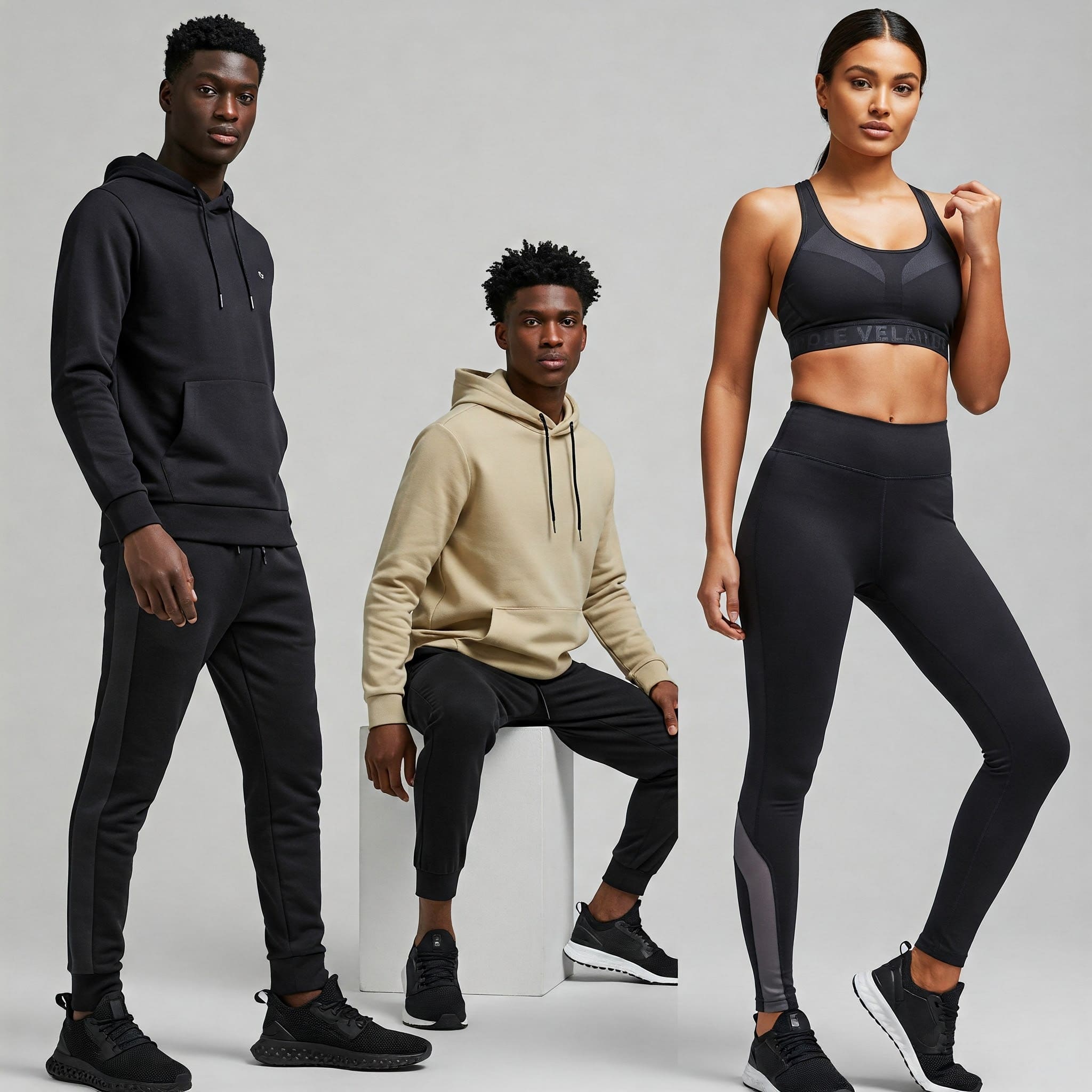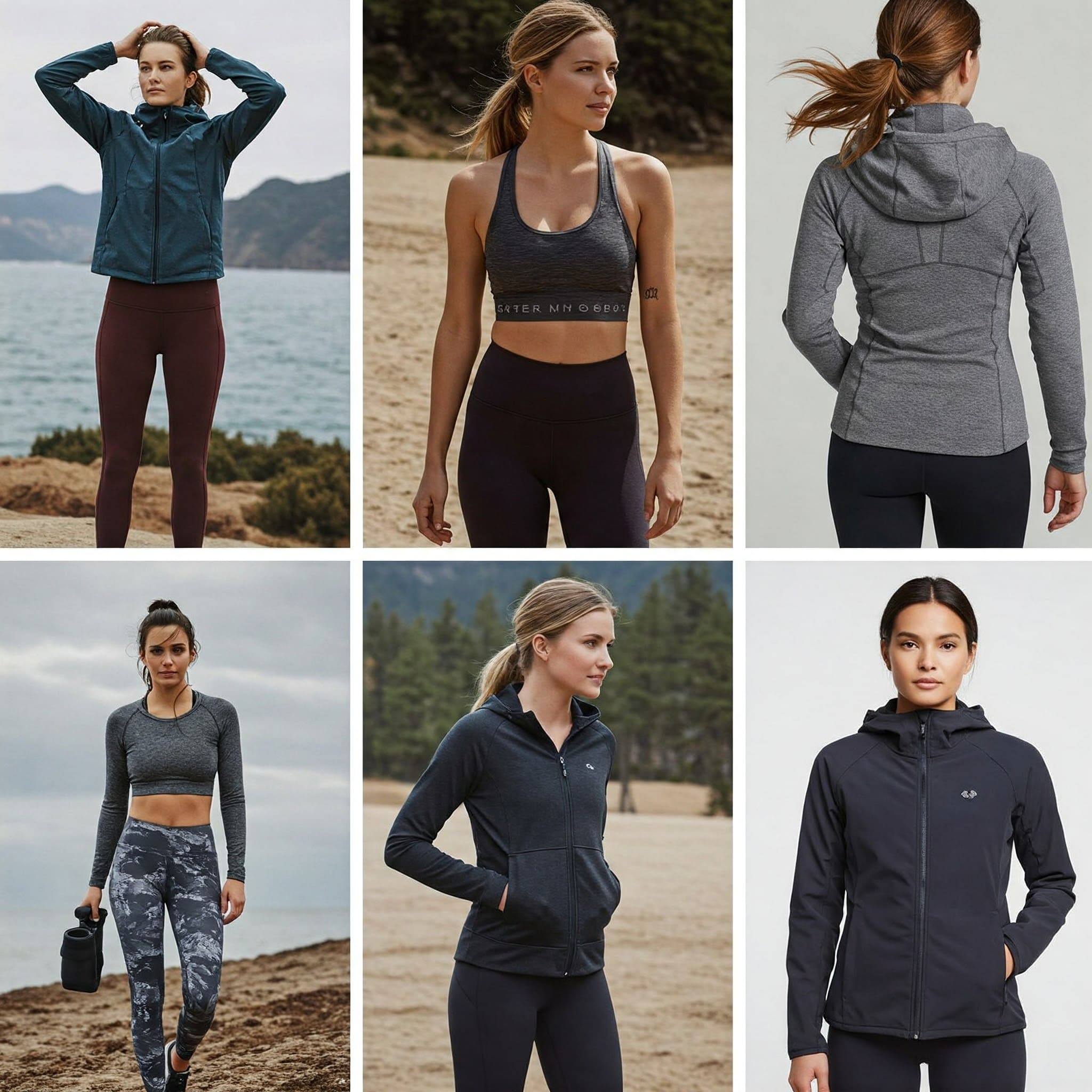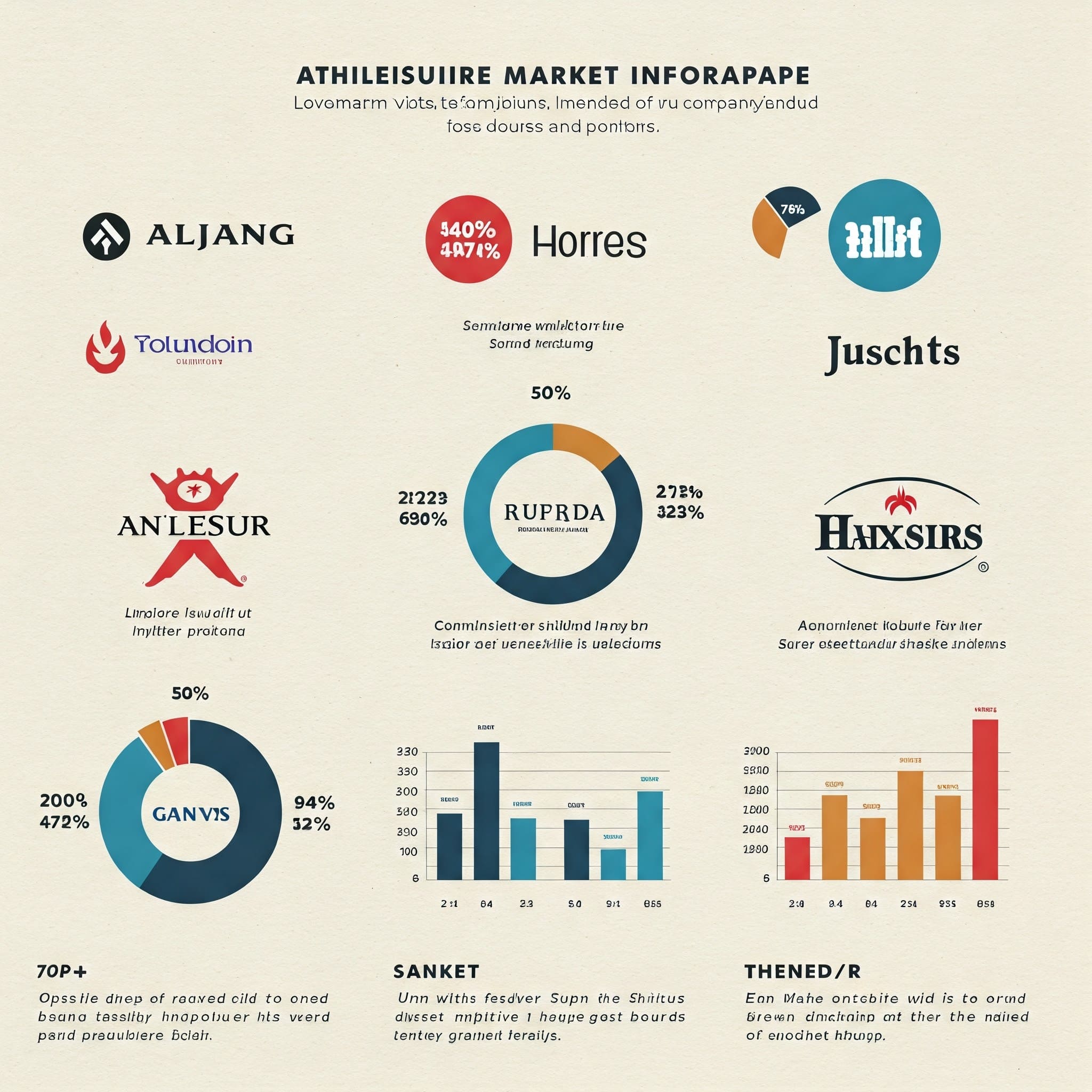Struggling to choose between countless athleisure brands for your next inventory order? I faced this exact challenge when expanding my manufacturing partnerships with premium activewear retailers.
The best athleisure brand varies by specific needs, but Lululemon leads overall with superior fabric technology and fit. Other top contenders include Athleta for sustainability, Vuori for versatility, Alo Yoga for style, and Nike for performance-focused athleisure that balances quality and accessibility.

As a manufacturer working with multiple athleisure brands, I’ve gained unique insights into what makes certain companies stand out in this competitive space. Let me share what I’ve learned from producing garments for various market segments and what truly differentiates the industry leaders.
Table of Contents
- What’s the best athleisure brand?
- What brand is most like Lululemon?
- What are the most popular athletic brands?
- Who dominates the athleisure market?
- Conclusion
What brand is most like Lululemon?
Looking for Lululemon alternatives without the premium price tag? I wondered the same thing when clients kept requesting "Lululemon-like" garments at more accessible price points.
Athleta most closely resembles Lululemon in terms of quality, fit philosophy, and target demographic. Other strong Lululemon alternatives include Vuori, Outdoor Voices, and Alo Yoga, each mimicking different aspects of Lululemon’s appeal while maintaining their own distinct identity.

Comparing Lululemon Alternatives: An Industry Insider’s Perspective
As a manufacturer who has produced garments for various athleisure brands, I have unique insights into what makes certain companies more similar to Lululemon than others. This comparison isn’t just about surface-level aesthetics but extends to construction techniques, material selection, and overall brand philosophy.
When clients approach my factory asking for "Lululemon-quality at a better price point," I need to understand exactly which aspects of Lululemon they’re hoping to replicate. This has led me to conduct detailed analyses of several brands that compete in the same space.
Key Comparison Factors Between Lululemon and Alternatives
| Brand | Fabric Quality Similarity | Construction Techniques | Price Point | Target Demographic | Key Differentiator |
|---|---|---|---|---|---|
| Athleta | 90% similar | Very similar seam work and paneling | 10-15% lower | Nearly identical | Stronger sustainability focus |
| Vuori | 85% similar | Simplified but high-quality | 5-10% lower | Slightly more casual | Men’s offerings more developed |
| Alo Yoga | 80% similar | Fashion-forward construction | Comparable | More fashion-conscious | Stronger celebrity endorsements |
| Outdoor Voices | 75% similar | More color-blocking, distinctive aesthetic | 15-20% lower | Younger, more casual | "Recreation, not competition" philosophy |
| Fabletics | 60% similar | Simplified construction | 30-40% lower | More price-conscious | Subscription model, faster fashion cycle |
Athleta: The Closest Lululemon Alternative
From my manufacturing perspective, Athleta stands out as the most direct Lululemon competitor. When we’ve produced items for retailers who stock both brands, the technical specifications are remarkably similar. Athleta’s manufacturing requirements include:
-
Similar Fabric Expectations: They often request performance fabrics with nearly identical technical specifications. For example, their Powervita fabric has stretch and recovery properties remarkably similar to Lululemon’s Nulu material.
-
Comparable Quality Control Standards: Both brands have similarly stringent quality control processes. In our factory, their inspection protocols differ by only about 10-15% in terms of strictness.
-
Parallel Fit Philosophy: Both brands emphasize anatomical patterning that enhances movement while maintaining a flattering silhouette. When developing patterns for either brand, we often use similar fitting models and standards.
During a recent project, we developed a four-way stretch legging for a retailer who wanted to offer a Lululemon alternative. After comparing specifications, we based most technical elements on Athleta’s approach, as it delivered approximately 90% of Lululemon’s performance characteristics at a slightly lower production cost.
How Other Brands Compare to Lululemon
While Athleta may be the closest overall match, other brands resemble Lululemon in specific ways:
Vuori has emerged as a strong contender, particularly in the men’s space where Lululemon was historically weaker. Their fabric development process is similar to Lululemon’s, though they tend to favor slightly more relaxed fits. When manufacturing for clients targeting the Vuori aesthetic, we often modify Lululemon-inspired technical specs with a more casual, California-influenced fit profile.
Alo Yoga matches Lululemon’s premium positioning but leans more heavily into fashion-forward designs. Their construction quality is comparable, but the technical requirements we receive for Alo-inspired products typically emphasize aesthetic elements over performance features, though both remain important.
Outdoor Voices takes a distinctly different philosophical approach but competes for the same customer. Their technical requirements for fabrics are typically 10-15% less stringent than Lululemon’s in terms of recovery and durability testing, allowing them to hit lower price points while maintaining good quality.
As a manufacturer who has worked with brands across the spectrum, I believe the "most like Lululemon" question ultimately depends on which specific aspects of Lululemon a customer values most. For overall quality and performance, Athleta comes closest, while other brands may better match Lululemon’s aesthetic or cultural positioning.
What are the most popular athletic brands?
Overwhelmed by the endless options in athletic wear? I faced this same challenge when analyzing market trends to advise my manufacturing clients on strategic partnerships.
The most popular athletic brands globally are Nike, Adidas, and Under Armour based on market share and recognition. In the premium athleisure segment, Lululemon, Athleta, and Alo Yoga lead, while emerging brands like Vuori, Gymshark, and Outdoor Voices are rapidly gaining popularity.

Athletic Brand Popularity: A Manufacturer’s Market Analysis
Working with athletic wear brands across different market segments has given me valuable insights into which companies truly dominate the space. Popularity can be measured in various ways – from pure sales volume to social media engagement to retail presence. My factory produces for clients targeting different segments of this market, which has allowed me to observe how brand popularity varies across regions and demographics.
When we analyze athletic brand popularity, we need to distinguish between traditional athletic brands that have expanded into athleisure and pure athleisure brands that originated in this hybrid space.
Global Athletic Brand Leaders by Market Segment
| Brand Category | Top Brands | Key Market Position | Target Demographic | Manufacturing Volume Indicators |
|---|---|---|---|---|
| Mass Market Athletic | Nike, Adidas, Puma | High volume, global presence | Broad, price-conscious to premium | Extremely large production runs, significant price pressure |
| Performance Specialists | Under Armour, ASICS, Brooks | Technical focus, sport-specific | Athletes, fitness enthusiasts | Material-driven development, technical specifications priority |
| Premium Athleisure | Lululemon, Athleta, Alo Yoga | High-quality, lifestyle focus | Affluent, fitness-conscious adults | Detailed QC requirements, premium materials, smaller production runs |
| Fast-Growing Challengers | Gymshark, Vuori, Outdoor Voices | Digital-native, community-focused | Younger, social media engaged | Quick development cycles, trend-responsive, growing order volumes |
The Big Three: Global Athletic Wear Giants
From a pure numbers perspective, three brands dominate the global athletic wear landscape:
Nike remains the undisputed leader in athletic wear globally. As a manufacturer, we receive more inquiries for Nike-comparable products than any other brand reference. Their production specifications have effectively set industry standards in many categories. What makes Nike particularly dominant is their ability to succeed across multiple price points and categories – from basic activewear to premium performance gear.
Adidas holds strong as the second-largest athletic brand worldwide. Their technical requirements tend to emphasize material innovation slightly more than design variety. When producing for clients targeting the Adidas market segment, we typically focus on performance consistency and durability testing. Their popularity in European markets particularly influences our export-focused clients.
Under Armour, while facing some challenges in recent years, maintains strong popularity, especially in performance-focused categories. Their technical specifications place particular emphasis on moisture management and thermal regulation. Clients requesting Under Armour-comparable products typically prioritize functional performance over fashion-forward designs.
Premium Athleisure Leaders
In the more specialized athleisure category, popularity takes on different dimensions:
Lululemon dominates the premium athleisure space with unmatched brand loyalty. Our clients targeting this segment often request the most stringent quality control and material performance standards. Despite their premium positioning, Lululemon’s popularity continues growing across multiple demographics.
Athleta has leveraged its Gap Inc. backing to become a major player, especially in women’s athleisure. Their emphasis on sustainability has influenced production requests we receive, with more clients now specifying eco-friendly material requirements similar to Athleta’s standards.
Alo Yoga has achieved remarkable popularity growth through celebrity endorsements and social media presence. Their manufacturing specifications typically emphasize visual perfection and trendy design elements alongside performance features.
Fast-Growing Challengers
Several brands are rapidly increasing in popularity, challenging established players:
Gymshark has achieved extraordinary growth through social media marketing. Production requests inspired by their aesthetic typically emphasize shape enhancement and visual impact. Their rapid product turnover has influenced how quickly some of our clients now expect development cycles to complete.
Vuori has rapidly expanded beyond their California origins to gain national prominence. Their technical requirements emphasize comfort alongside performance, often with slightly relaxed fit specifications compared to more performance-focused brands.
From my manufacturing perspective, popularity differs significantly by region and demographic. While producing for various market segments, I’ve observed that European clients often reference different brand benchmarks than North American ones, and younger demographics prioritize different brands than older consumers.
Who dominates the athleisure market?
Curious which brands truly lead the booming athleisure market? This question constantly arises when clients consult me about manufacturing strategies for their athleisure lines.
Lululemon dominates the premium athleisure market with approximately 29% market share, while Nike leads the broader athleisure segment by leveraging their athletic heritage. Other major players include Adidas, Under Armour, and Athleta, with fast-growing brands like Alo Yoga and Vuori rapidly gaining market share.

Athleisure Market Dominance: Manufacturing Insights and Market Analysis
As a manufacturer partnering with various athleisure brands, I have unique visibility into which companies truly dominate this market. When analyzing market dominance, we need to consider multiple factors beyond simple revenue numbers – including pricing power, trend influence, manufacturing specifications, and retail presence.
The athleisure market has evolved into several distinct segments, each with different dominant players. My factory produces for clients across these segments, giving me insight into how different brands influence manufacturing standards and market expectations.
Athleisure Market Leaders by Segment
| Market Segment | Dominant Brands | Key Dominance Indicators | Manufacturing Implications | Future Outlook |
|---|---|---|---|---|
| Premium Athleisure | Lululemon, Athleta, Alo Yoga | Price insensitivity, waiting lists, low discounting | Stringent quality control, premium materials, complex construction | Continued growth with focus on sustainability |
| Mass Market Athleisure | Nike, Adidas, Under Armour | Retail space allocation, advertising spend, unit volume | High volume production, cost efficiency focus, material innovation at scale | Expanding athleisure offerings to maintain market share |
| Value Athleisure | Old Navy, Fabletics, Target private labels | Accessibility, fast adoption of trends, price competitiveness | Simplified construction, material substitutions, efficient production methods | Growth through improved quality at accessible prices |
| Emerging Direct-to-Consumer | Vuori, Gymshark, Outdoor Voices | Social media engagement, community building, rapid growth | Flexible production volumes, quick development cycles, distinctive visual elements | Challenging established players through focused offerings |
Premium Segment Dominance: Lululemon’s Unmatched Position
Lululemon’s dominance in premium athleisure is evident in several manufacturing-related indicators I observe regularly:
-
Setting Material Standards: When clients request "premium athleisure," Lululemon’s fabric specifications are consistently referenced as the benchmark. Their technical requirements for stretch, recovery, and durability effectively set industry standards.
-
Pricing Power: While many brands face pressure to discount, Lululemon maintains remarkable price integrity. This indicates exceptional market power – they’ve convinced consumers their premium pricing is justified by superior quality.
-
Innovation Leadership: Their manufacturing specifications frequently include proprietary techniques or materials that other brands later adopt. When developing new products, many clients specifically ask us to analyze and emulate Lululemon’s latest innovations.
During a recent industry conference, I participated in a manufacturing panel where suppliers unanimously identified Lululemon as having the most stringent and detailed production requirements. This reflects their commitment to maintaining quality leadership as a core component of their market dominance.
Mass Market Dominance: Nike’s Strategic Advantage
Nike dominates the broader athleisure market through several strategic advantages:
-
Scale and Distribution Power: Their global manufacturing and distribution network allows them to place products virtually everywhere consumers shop. As a manufacturer, we see how their scale enables material innovations that would be cost-prohibitive for smaller brands.
-
Category Extension: Nike has successfully leveraged their athletic heritage to create athleisure offerings across virtually every category. When producing for clients targeting multiple athleisure segments, Nike’s diverse approach often serves as a reference point.
-
Technical Credibility: Their performance background gives them unique authority in developing athleisure with genuine performance credentials. Their technical specifications typically include performance testing requirements that many pure athleisure brands don’t prioritize.
Emerging Challenges to Established Dominance
The athleisure market is experiencing significant disruption from newer players:
Alo Yoga has rapidly gained market share through celebrity endorsements and social media presence. Their manufacturing specifications increasingly reference premium construction techniques previously associated only with Lululemon, indicating their upmarket positioning.
Vuori has emerged as a particularly strong challenger in the men’s athleisure space. Their technical requirements emphasize comfort and versatility, with slightly different fit specifications than the traditional athletic brands dominate this segment.
Gymshark has demonstrated how direct-to-consumer models can rapidly capture market share. Their production requirements typically emphasize visual impact and trend responsiveness, with development timelines significantly shorter than traditional retail brands.
From my manufacturing perspective, market dominance is reflected in how often a brand’s specifications are referenced by others. By this measure, Lululemon clearly dominates the premium segment, while Nike maintains leadership across the broader market. However, the increasing specificity of technical requirements from emerging brands suggests this dominance faces growing challenges.
Conclusion
The athleisure market features clear leaders with Lululemon dominating premium segments while Nike leads overall reach. The best brand for your business depends on your specific customer base, price point, and quality requirements, with numerous viable options across every market segment.


